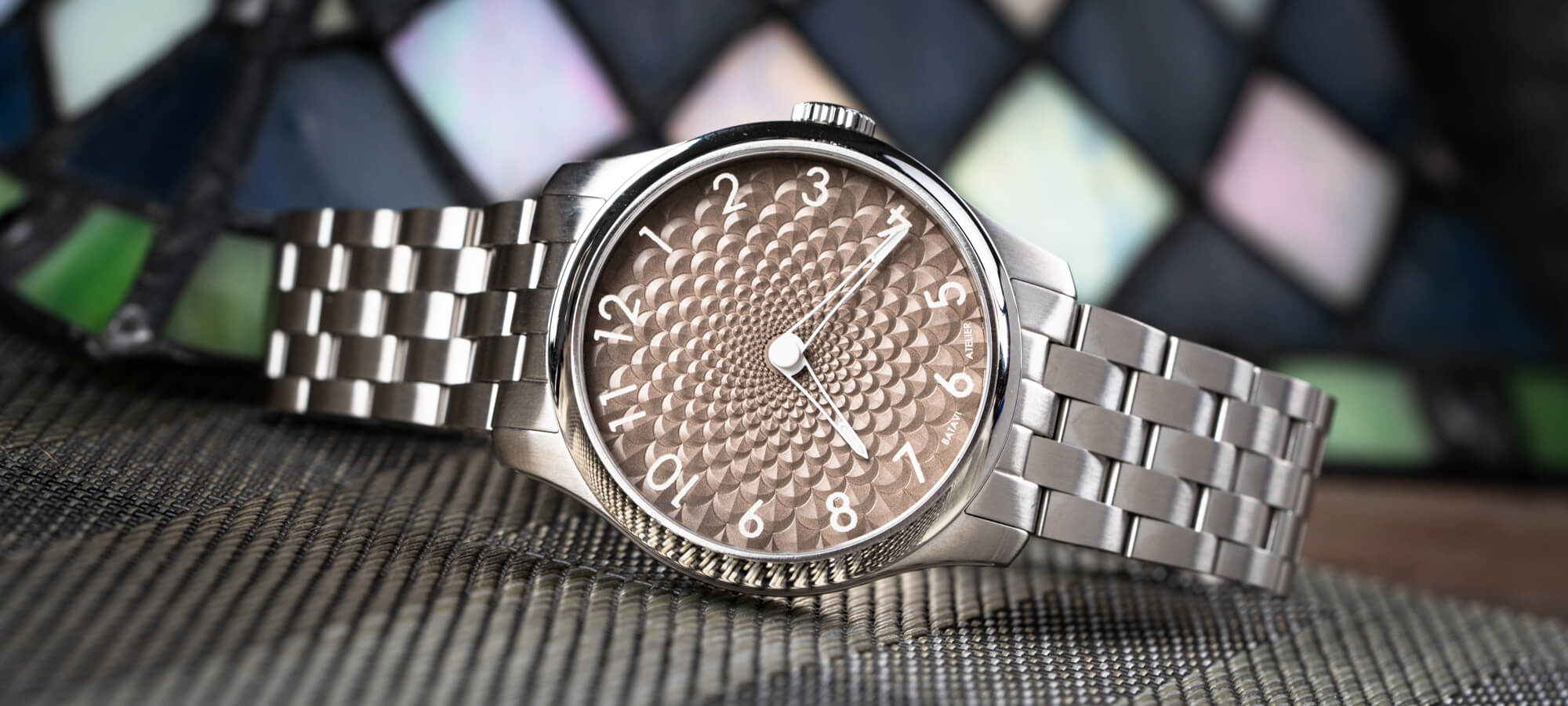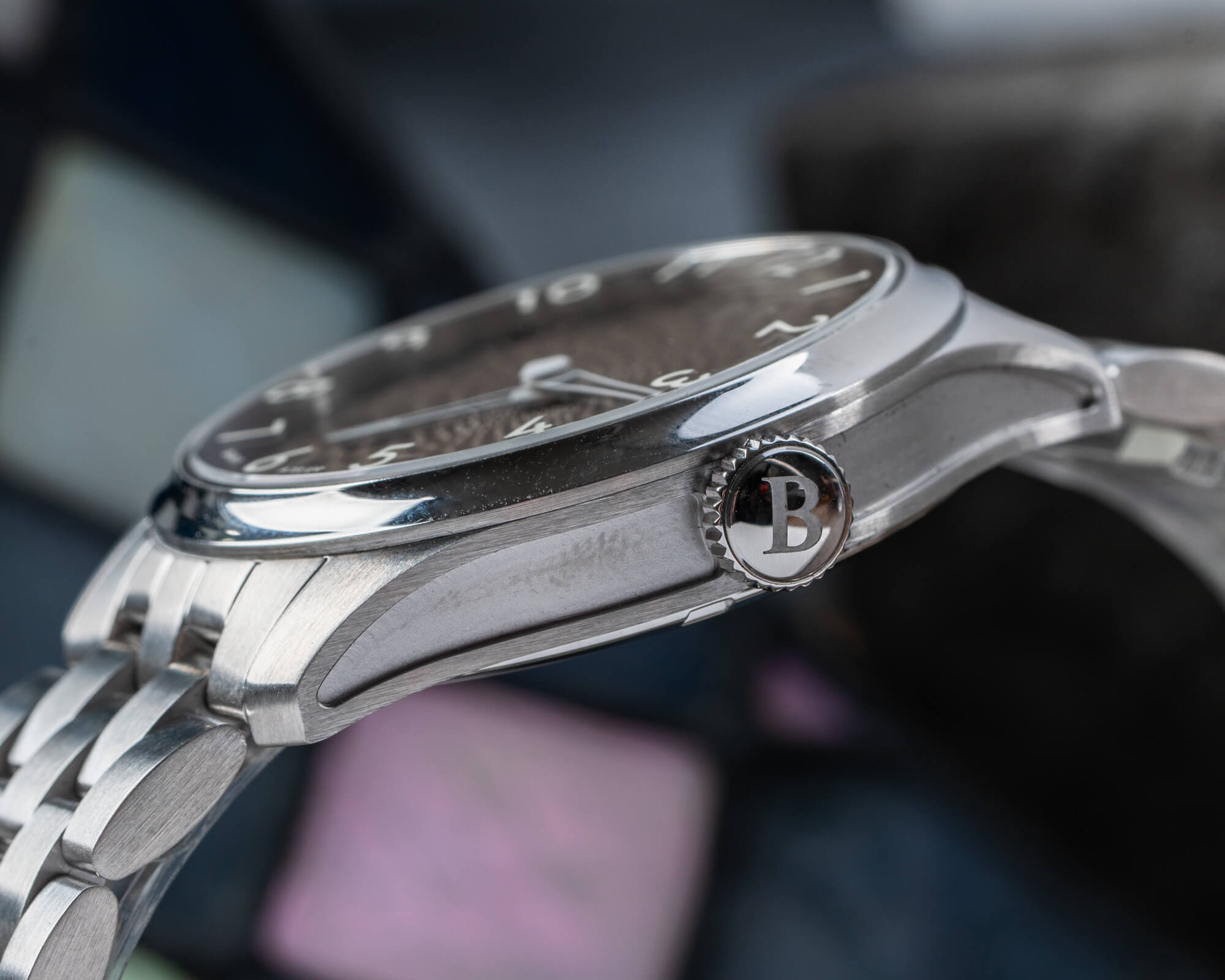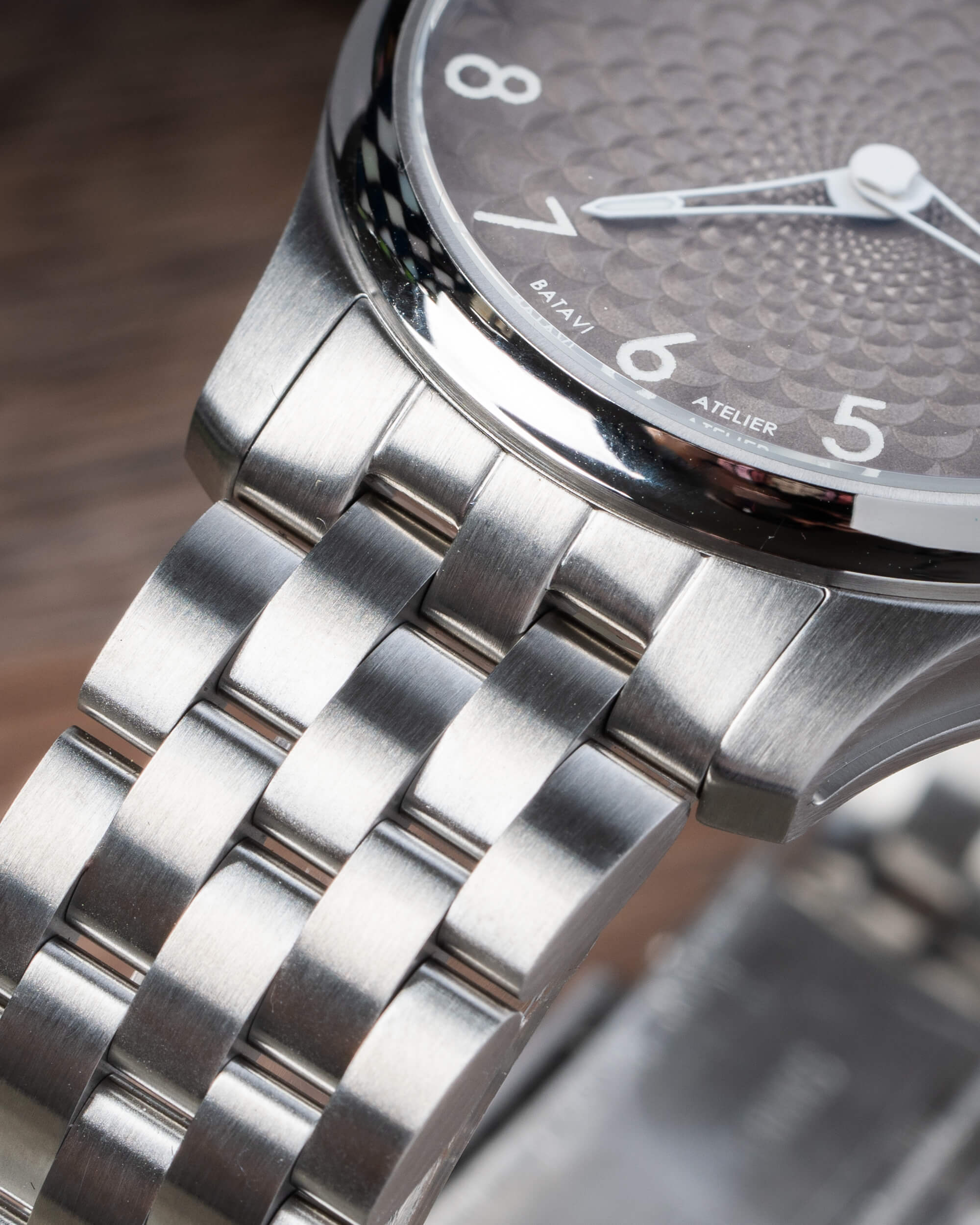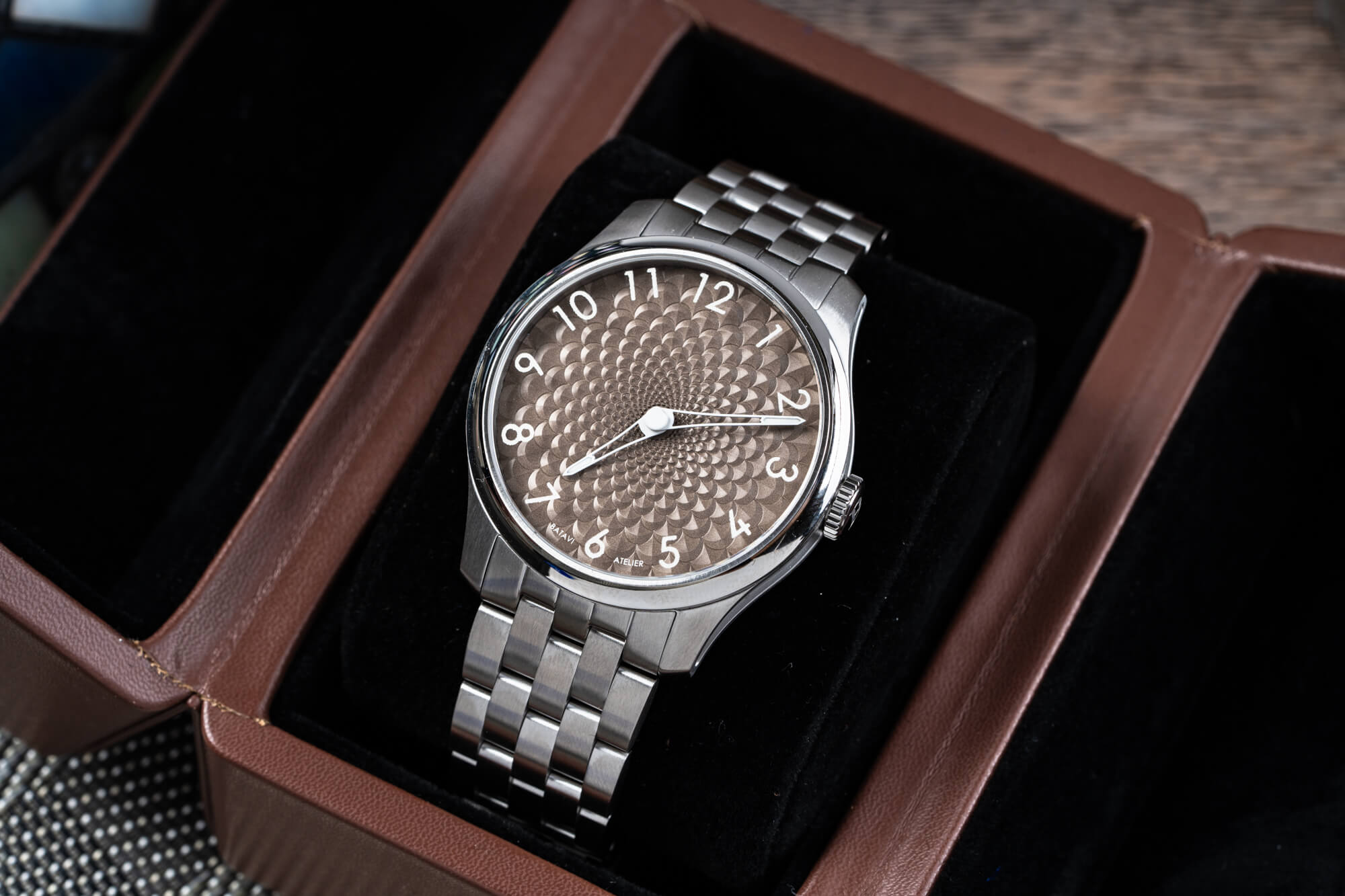 Releasing its fourth model, Dutch microbrand Batavi went in a new direction with a watch that’s more formal than any of its prior models and includes elements rarely seen from any brand at any price point. Prior models had a very microbrand vibe, with bold colors and sometimes too much polishing, among other less-developed design elements. With the integrated bracelet Architect model, a certain refinement started to appear, rooted in restraint. It’s that more sophisticated design approach that I think the brand has finally perfected with the new Batavi Atelier, a sleek and elegant time-only watch with a lot to love.
Releasing its fourth model, Dutch microbrand Batavi went in a new direction with a watch that’s more formal than any of its prior models and includes elements rarely seen from any brand at any price point. Prior models had a very microbrand vibe, with bold colors and sometimes too much polishing, among other less-developed design elements. With the integrated bracelet Architect model, a certain refinement started to appear, rooted in restraint. It’s that more sophisticated design approach that I think the brand has finally perfected with the new Batavi Atelier, a sleek and elegant time-only watch with a lot to love.
 The Batavi Atelier may catch your eye, first and foremost, with its dial, but I found the case to be just as intriguing. Moving away from the thicker, more generic cases of some of its previous models, the Atelier gets an elegant 39mm case that’s 46mm lug-to-lug and a respectable 11mm thick. A gentle curve to the form allows it to sit comfortably on the wrist. This case profile may be one of the best suited for my 7-inch wrist that I’ve encountered. The case’s pull-out crown doesn’t significantly affect the water resistance, which is 100m, but it does seem to be an afterthought. It’s a bit too short, and the fully polished finish seems a bit out of place. I might have preferred something narrower and longer, with a matte or brushed fluting and a polished end.
The Batavi Atelier may catch your eye, first and foremost, with its dial, but I found the case to be just as intriguing. Moving away from the thicker, more generic cases of some of its previous models, the Atelier gets an elegant 39mm case that’s 46mm lug-to-lug and a respectable 11mm thick. A gentle curve to the form allows it to sit comfortably on the wrist. This case profile may be one of the best suited for my 7-inch wrist that I’ve encountered. The case’s pull-out crown doesn’t significantly affect the water resistance, which is 100m, but it does seem to be an afterthought. It’s a bit too short, and the fully polished finish seems a bit out of place. I might have preferred something narrower and longer, with a matte or brushed fluting and a polished end.
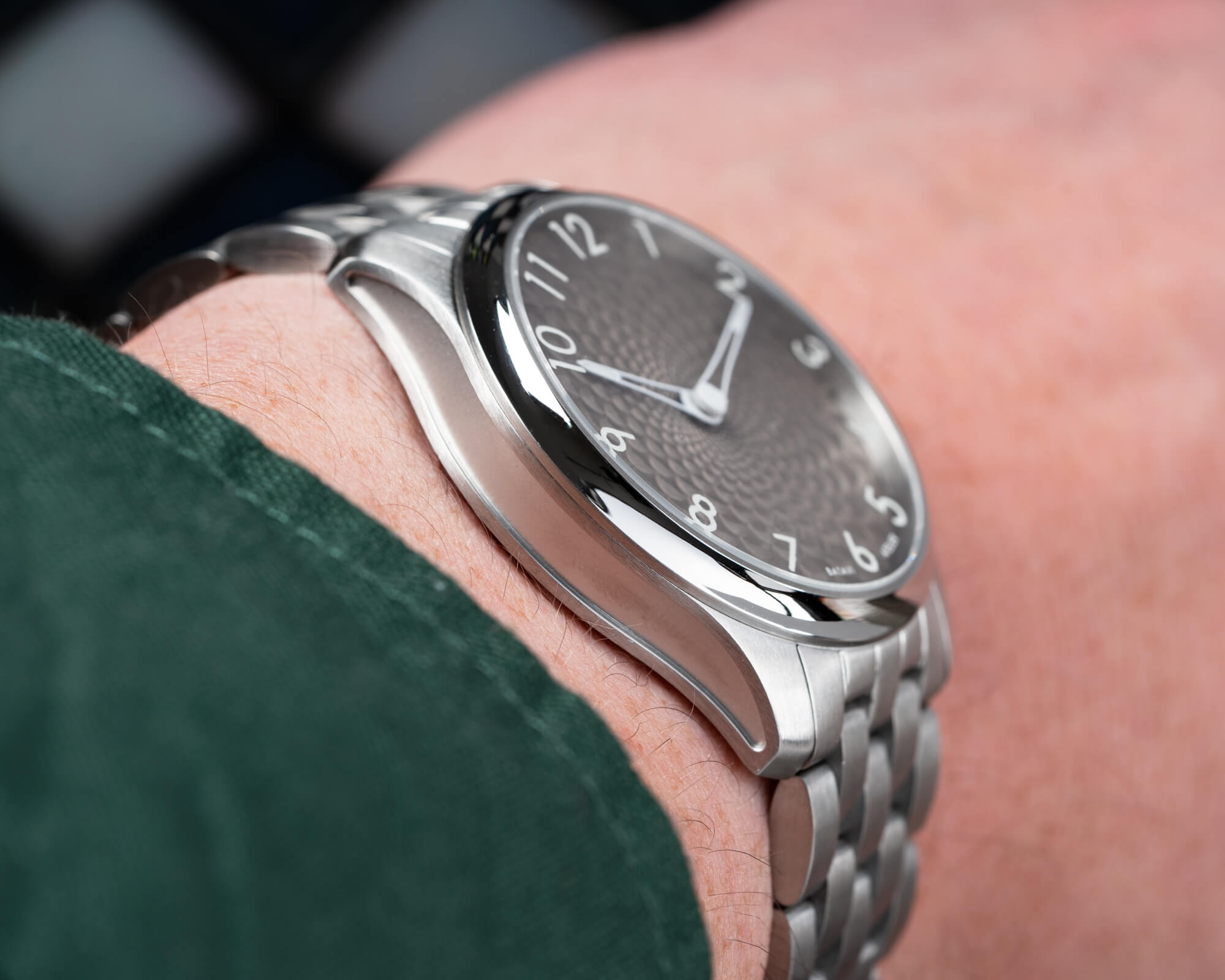 Perhaps most striking, though, is the mid-case. Both sides of the case feature a hollowed cavity with a matte finish that contrasts with the brushed case and the concave polished bezel (an element you’re more likely to see on very high-end watches). I really love the look, and it adds a good dose of character to an already attractive watch. I think the transitions could be crisper and the finishing a bit finer, but at this sub-$1000 price point, I think the finishing is perfectly acceptable and the watch remains decidedly attractive. I also accept that there is a look that involves this rougher finishing, and that’s fine and may even be the case here.
Perhaps most striking, though, is the mid-case. Both sides of the case feature a hollowed cavity with a matte finish that contrasts with the brushed case and the concave polished bezel (an element you’re more likely to see on very high-end watches). I really love the look, and it adds a good dose of character to an already attractive watch. I think the transitions could be crisper and the finishing a bit finer, but at this sub-$1000 price point, I think the finishing is perfectly acceptable and the watch remains decidedly attractive. I also accept that there is a look that involves this rougher finishing, and that’s fine and may even be the case here.
In college, I had this pair of shiny black magnets that looked a bit like a perfect cigar, tapered to a round point at both ends, bulging in the center. I actually rested them on my laptop like a moron, and they ruined the hard drive. But I digress: The links of the Batavi bracelet remind me of those magnets, though I suppose I could just as easily call them pillow-shaped. They make the quick-release bracelet soft and comfortable, with plenty of points for articulation and a low-profile folding clasp. The straight brushing perfectly lines up with that of the case, and I thank the brand for that. Too often, you get a lovely circular brushed case and straight brushed end links, and the clash is jarring.
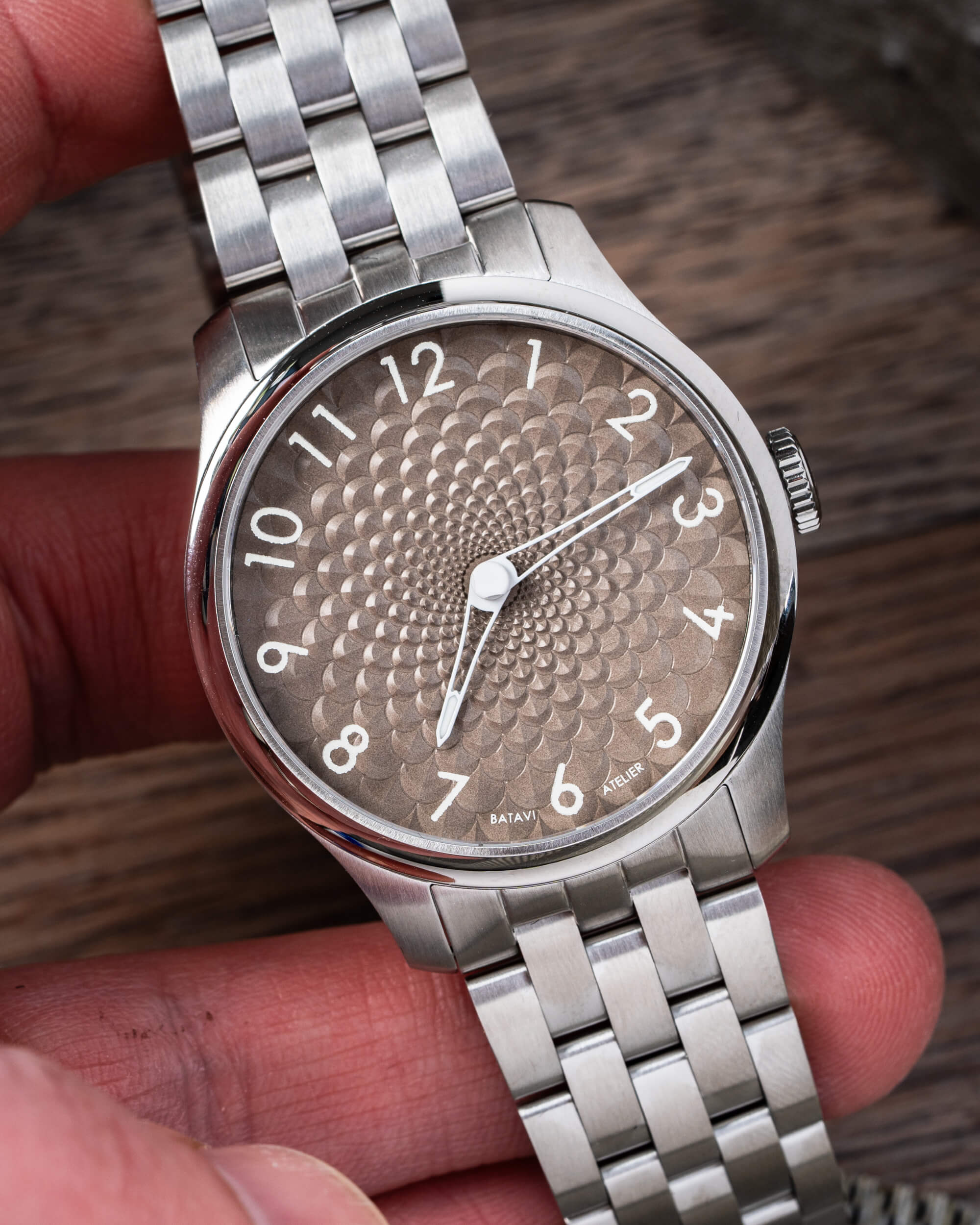 However attractive I find the case, it’s hard to argue that the dial isn’t the main attraction here. On its website, Batavi, perhaps a bit humorously, says the fish scale design of the dial was inspired by the Netherlands’ “greatest enemy,” the sea. It’s a stamped “guilloché-inspired” pattern, but the outcome is still captivating, with the scale motif radiating from the center in well-defined peaks and valleys, growing larger as it approaches the edge of the dial. It’s dimensional and plays beautifully with the light, even on this more muted Dune color (the watch is also available in purple “Rock” and blue “Aquamarine”).
However attractive I find the case, it’s hard to argue that the dial isn’t the main attraction here. On its website, Batavi, perhaps a bit humorously, says the fish scale design of the dial was inspired by the Netherlands’ “greatest enemy,” the sea. It’s a stamped “guilloché-inspired” pattern, but the outcome is still captivating, with the scale motif radiating from the center in well-defined peaks and valleys, growing larger as it approaches the edge of the dial. It’s dimensional and plays beautifully with the light, even on this more muted Dune color (the watch is also available in purple “Rock” and blue “Aquamarine”).

The dial’s fish scale design is just part of the charm, though. The hands are skeletonized with lumed tips, and if you look closely, you’ll notice that in lieu of a seconds hand, there’s a rotating cap on the cannon pinion, with a subtle point. Batavi told me that they wanted to keep the “Hey, this is automatic!” of the ticking seconds hand, but without the actual presence of a seconds hand. The solution is the small rotating pinion cap, and I think it’s a novel one that works well. The second element is the numerals, which are printed with lume on the underside of the sapphire crystal. We’ve seen this on other watches like this, perhaps most notably, the incredible Sinn 809. Printing them on the underside allows the dial to remain clean and the numerals and other text to remain legible and not distorted by the undulations of the dial. As you can probably see, when you get up close, the printing isn’t incredibly crisp, and that’s even evident when the lume is glowing (including the lume application on the seconds cap). Printing quality aside, it’s still fun to look down and see the numbers and text floating.
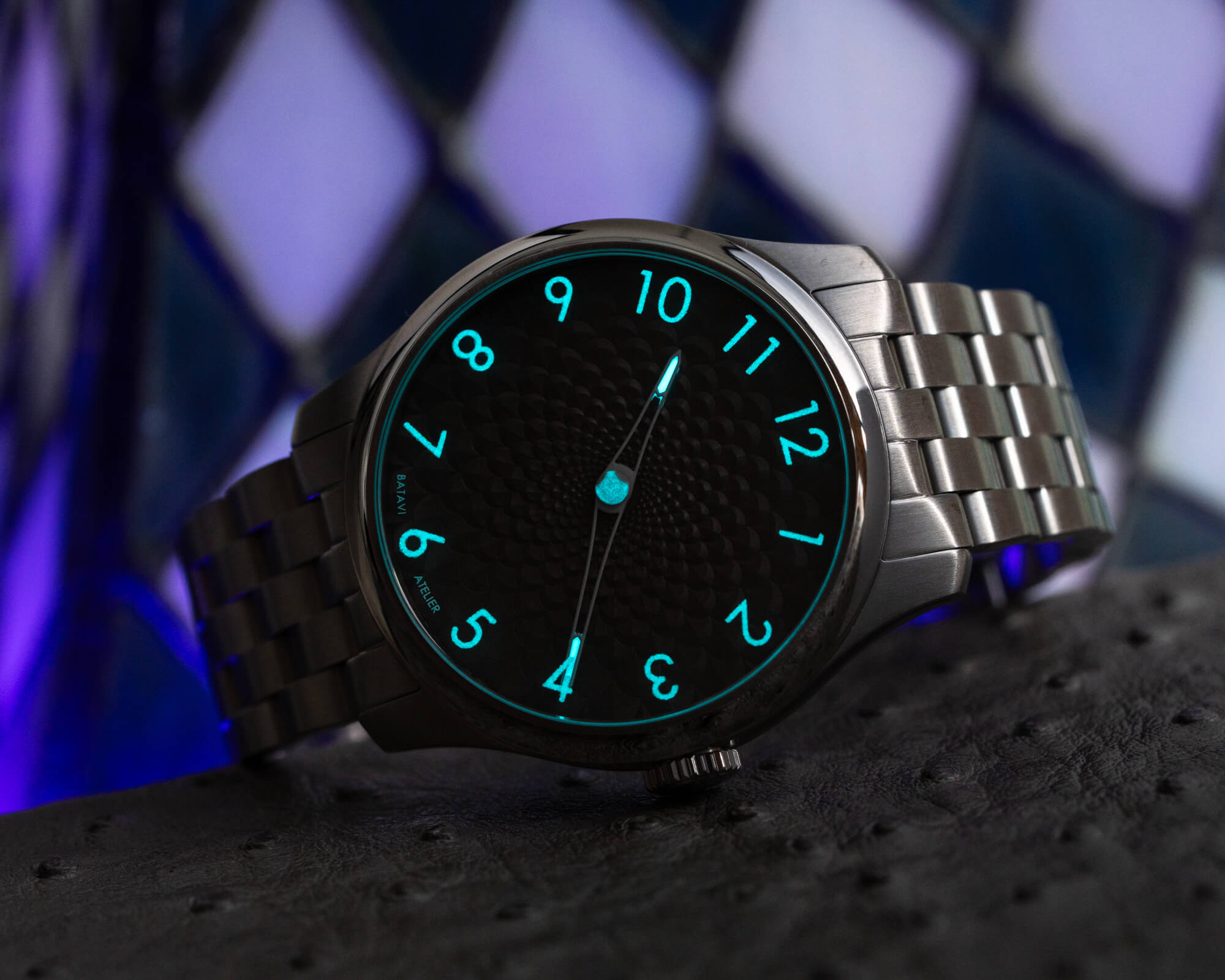 Behind a solid case back sits the automatic Miyota 9039, a reliable workhorse of a movement if there ever was one. This is the go-to no-date caliber for affordable watch brands, so you’re likely already quite familiar with it — you may even have a few watches with the movement. In case you’re not, it boasts a 42-hour power reserve at 28,800 vph and an off-the-shelf accuracy of -10/+30 seconds per day. At this price point, in this watch, it’s exactly what you’d expect and there’s nothing wrong with meeting expectations.
Behind a solid case back sits the automatic Miyota 9039, a reliable workhorse of a movement if there ever was one. This is the go-to no-date caliber for affordable watch brands, so you’re likely already quite familiar with it — you may even have a few watches with the movement. In case you’re not, it boasts a 42-hour power reserve at 28,800 vph and an off-the-shelf accuracy of -10/+30 seconds per day. At this price point, in this watch, it’s exactly what you’d expect and there’s nothing wrong with meeting expectations.
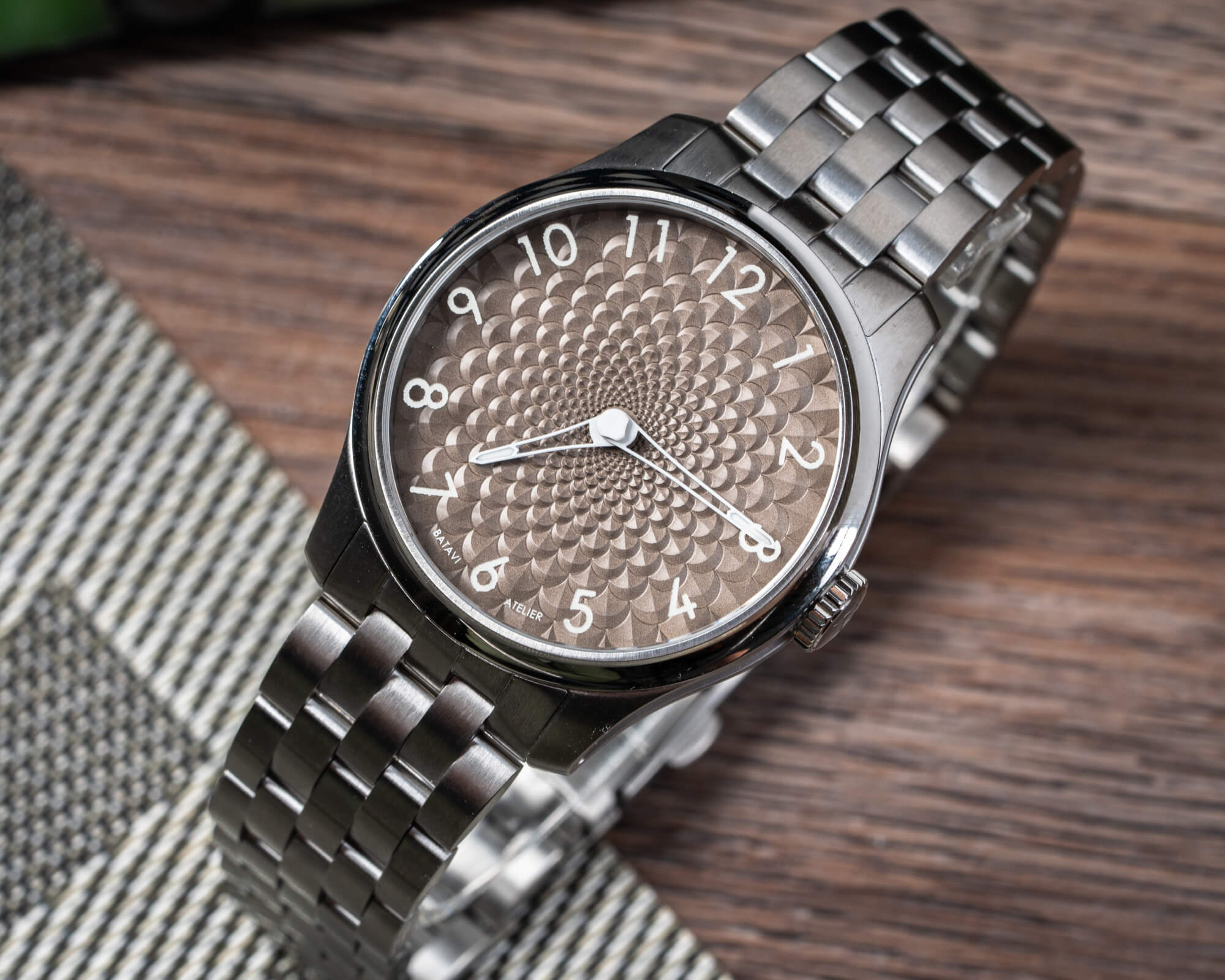
For my money, this is a big winner. There are things that could be improved — the finishing could be punched up, the numeral printing could be smoother — but at this price point, there are very few watches that deliver such a thoughtfully designed package. The Dune dial was not my first choice for a review piece (I wanted the purple), but I still found myself staring at the dial and rolling my wrist around to admire the case. The Batavi Atelier retails for €578 EUR (though it’s currently discounted to €479). For more information, please visit the Batavi website.

